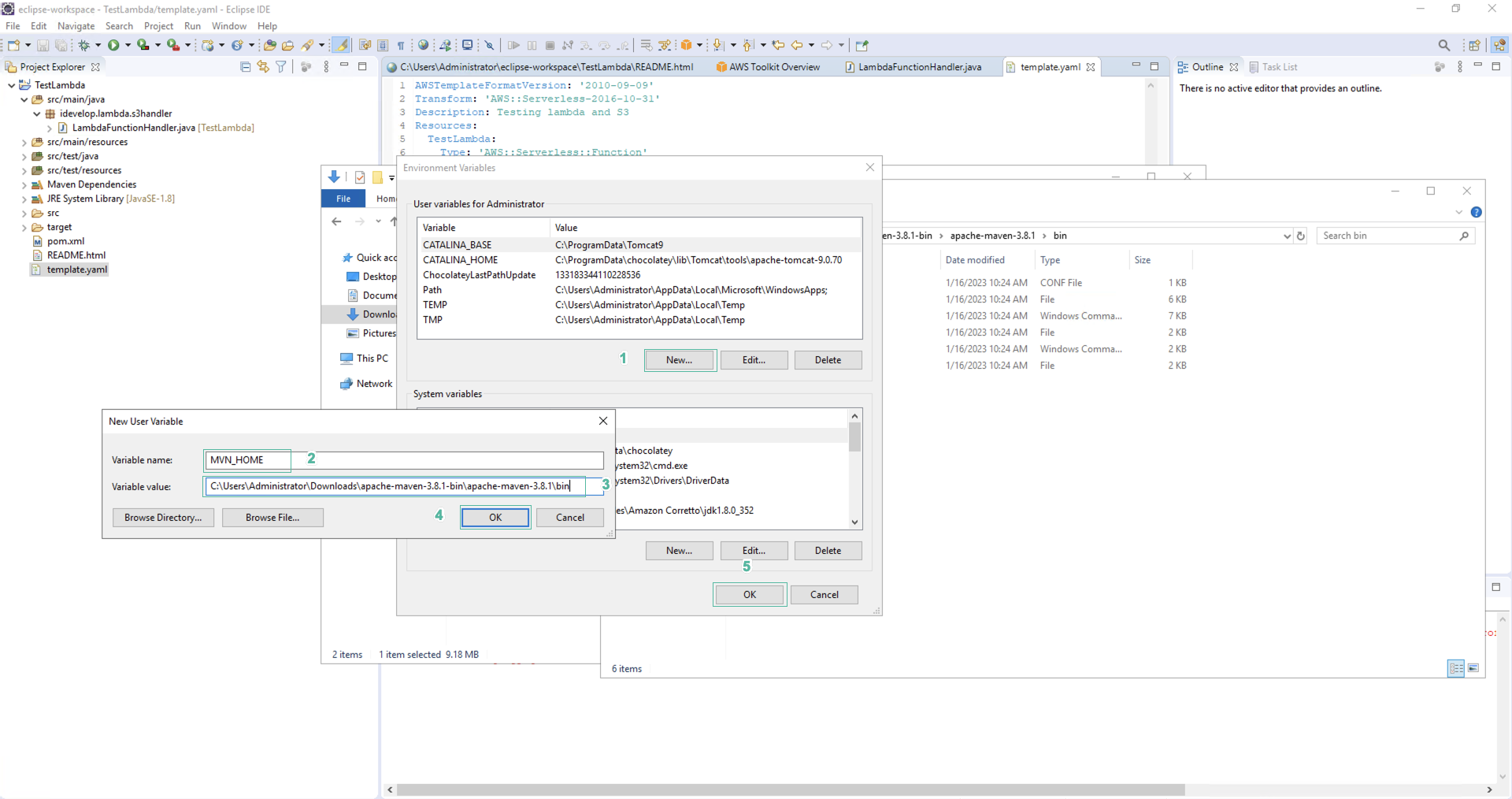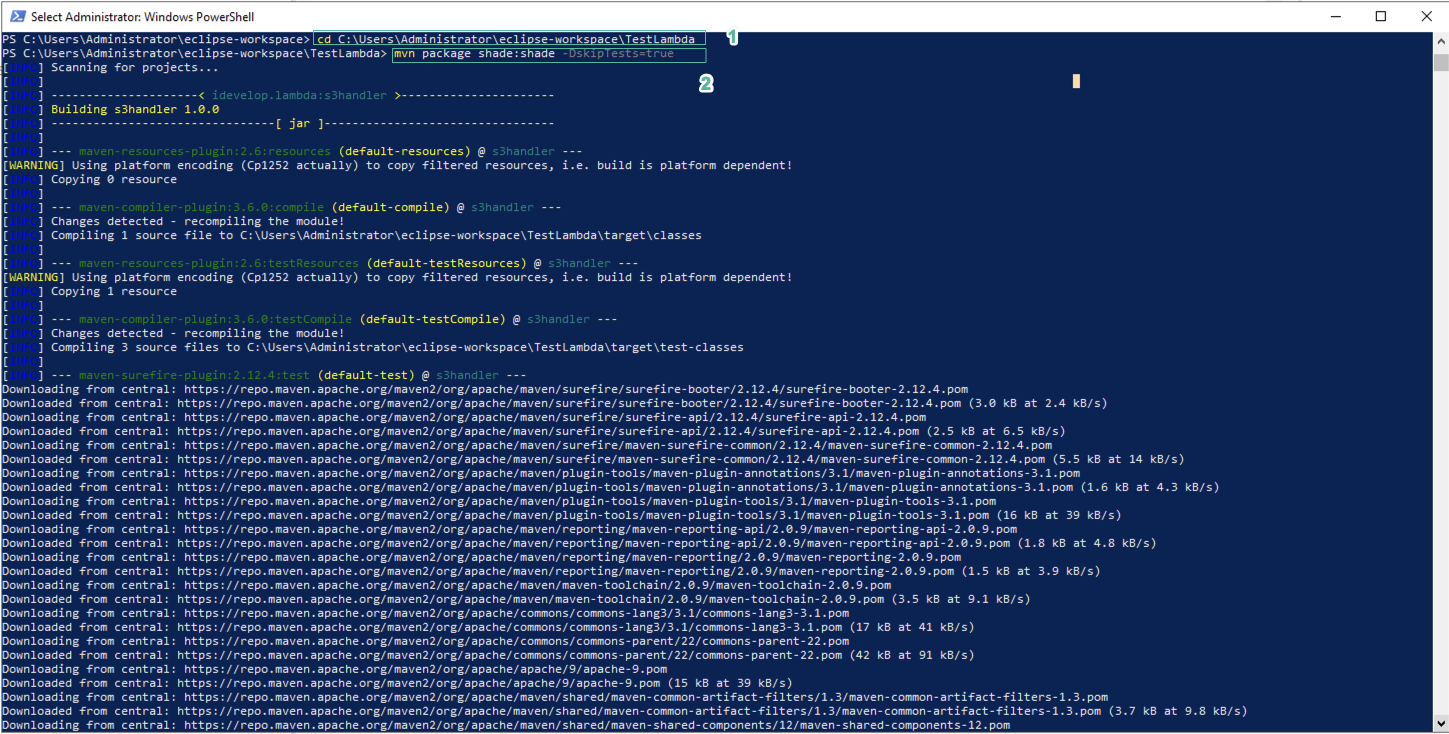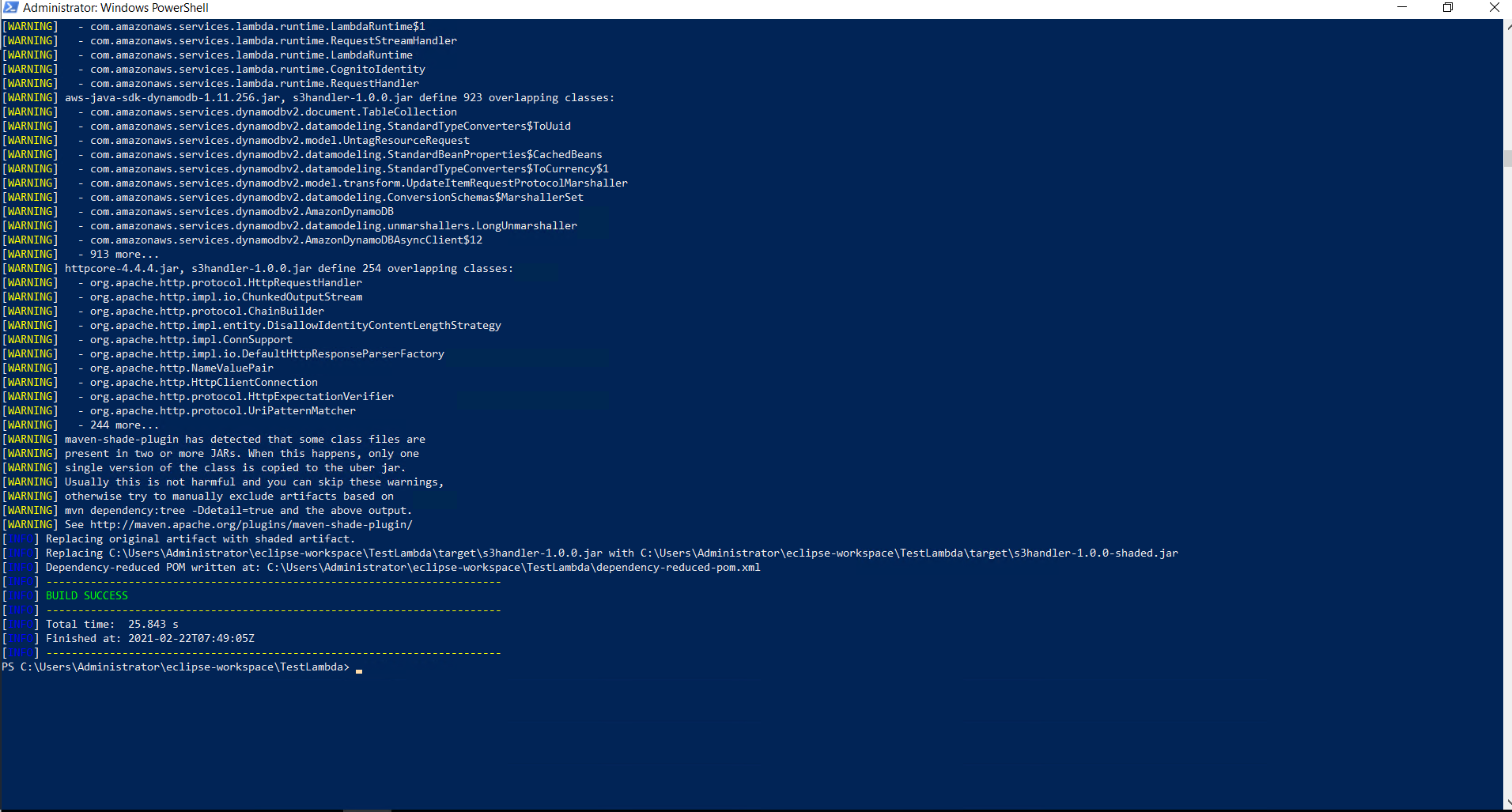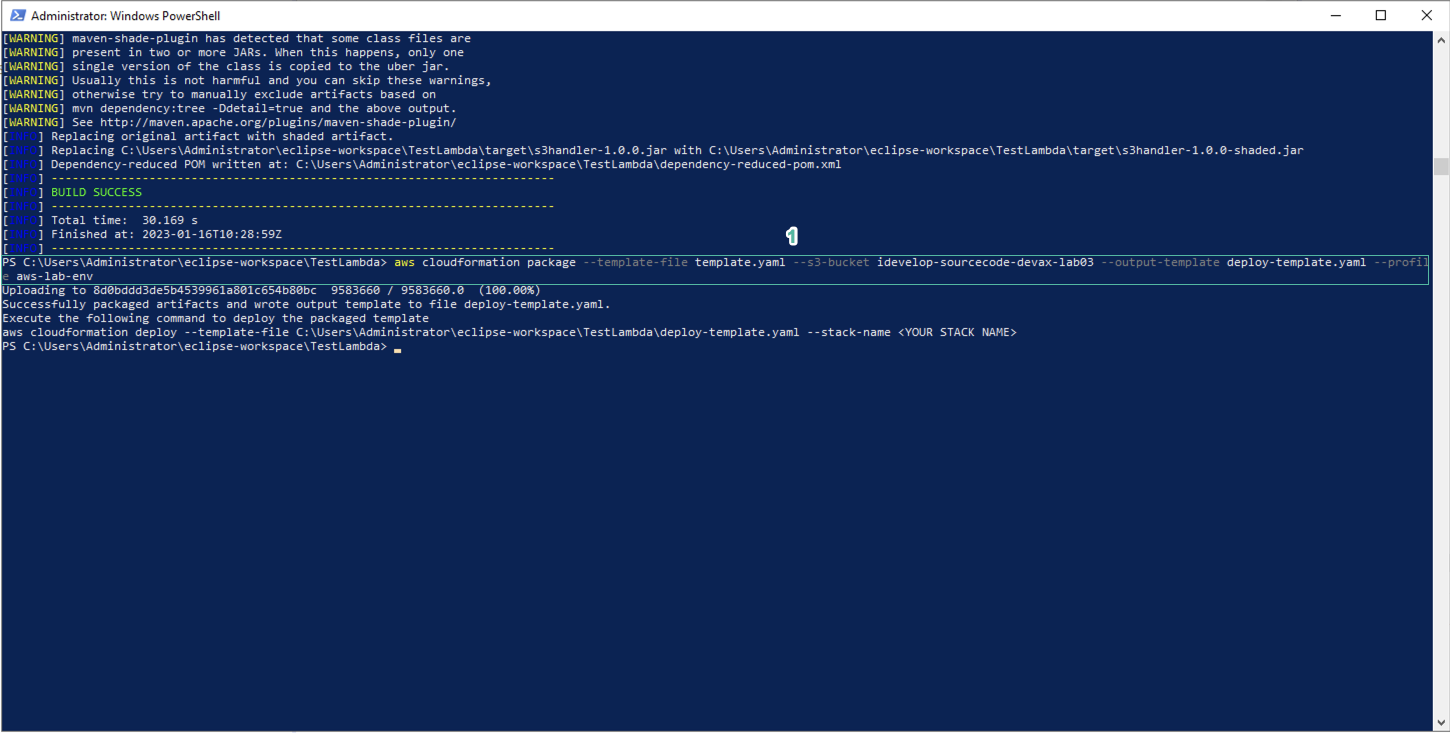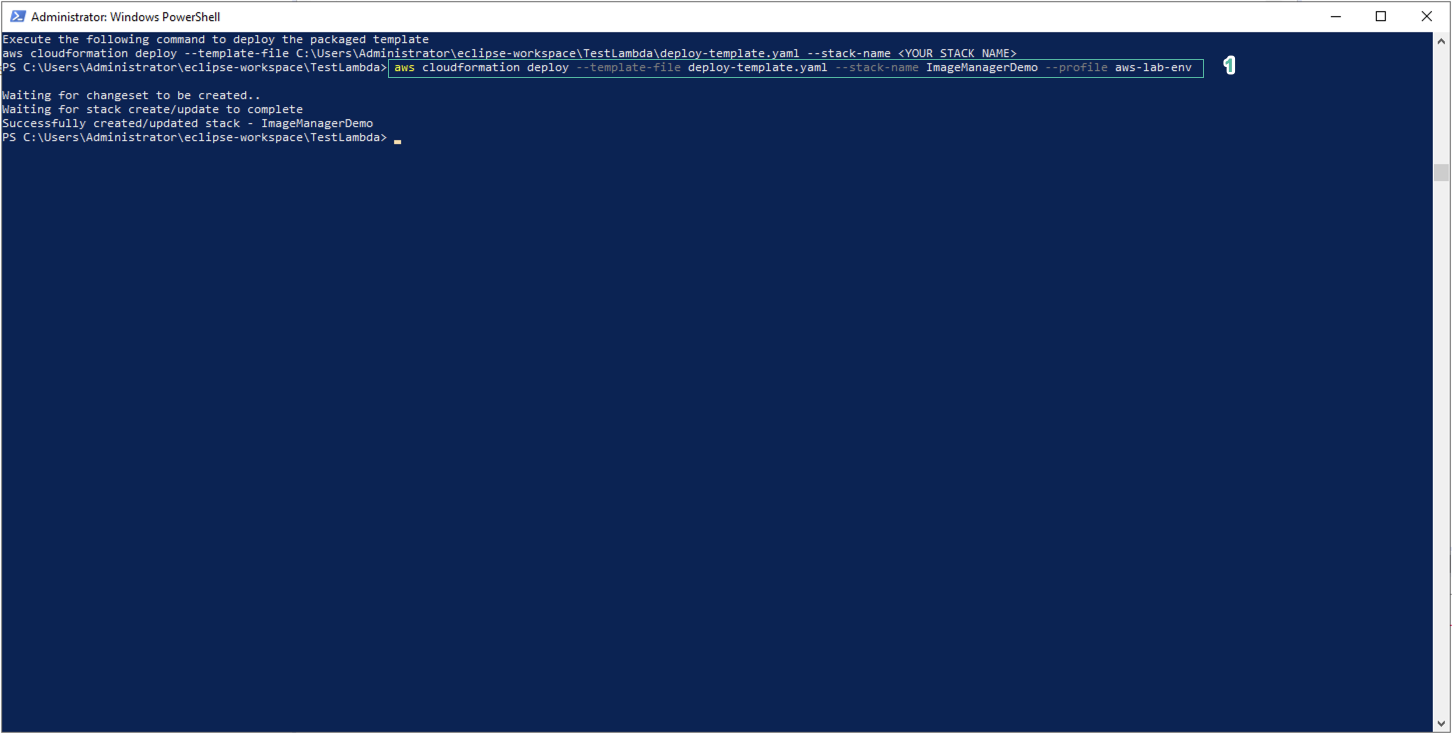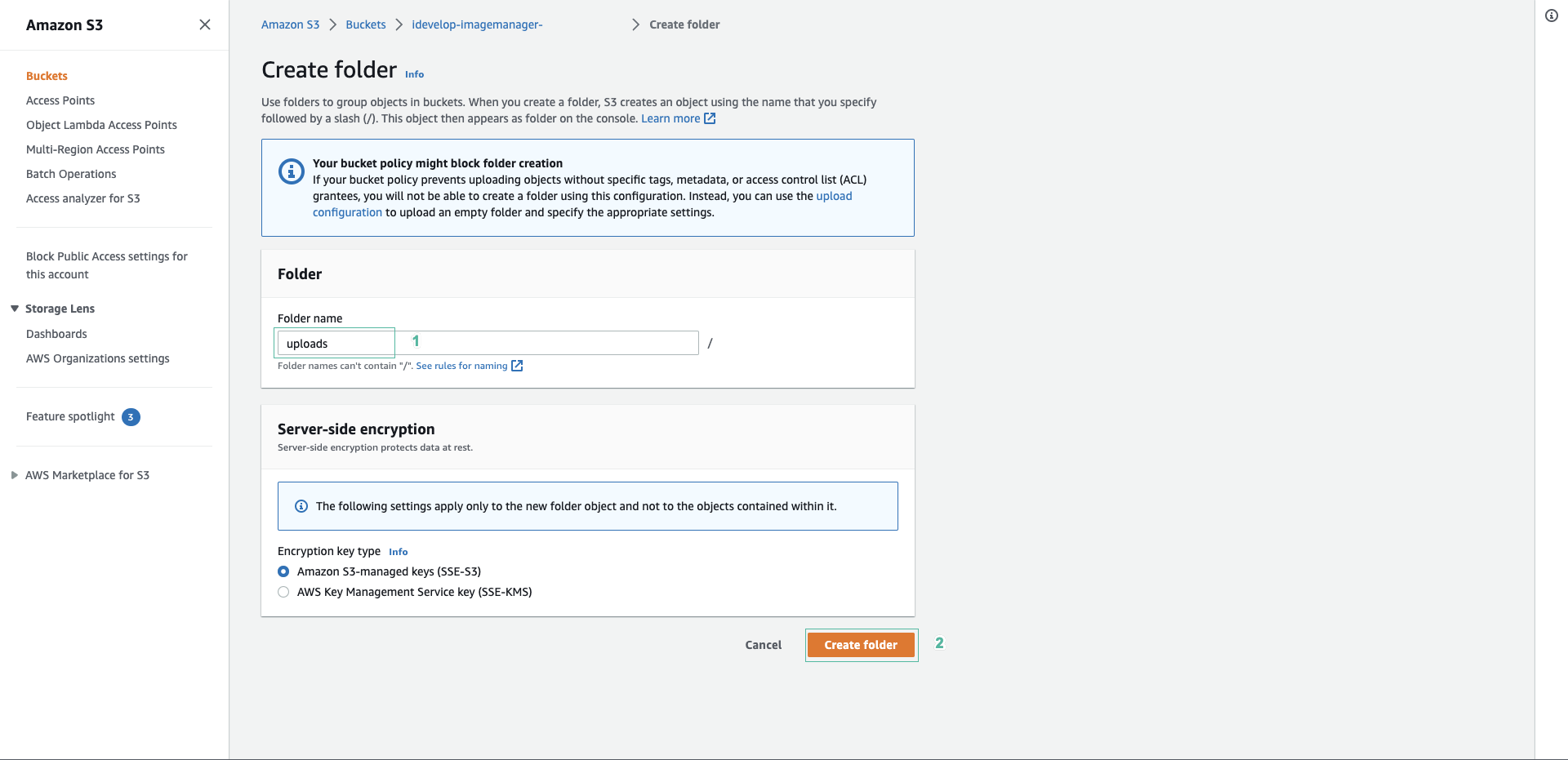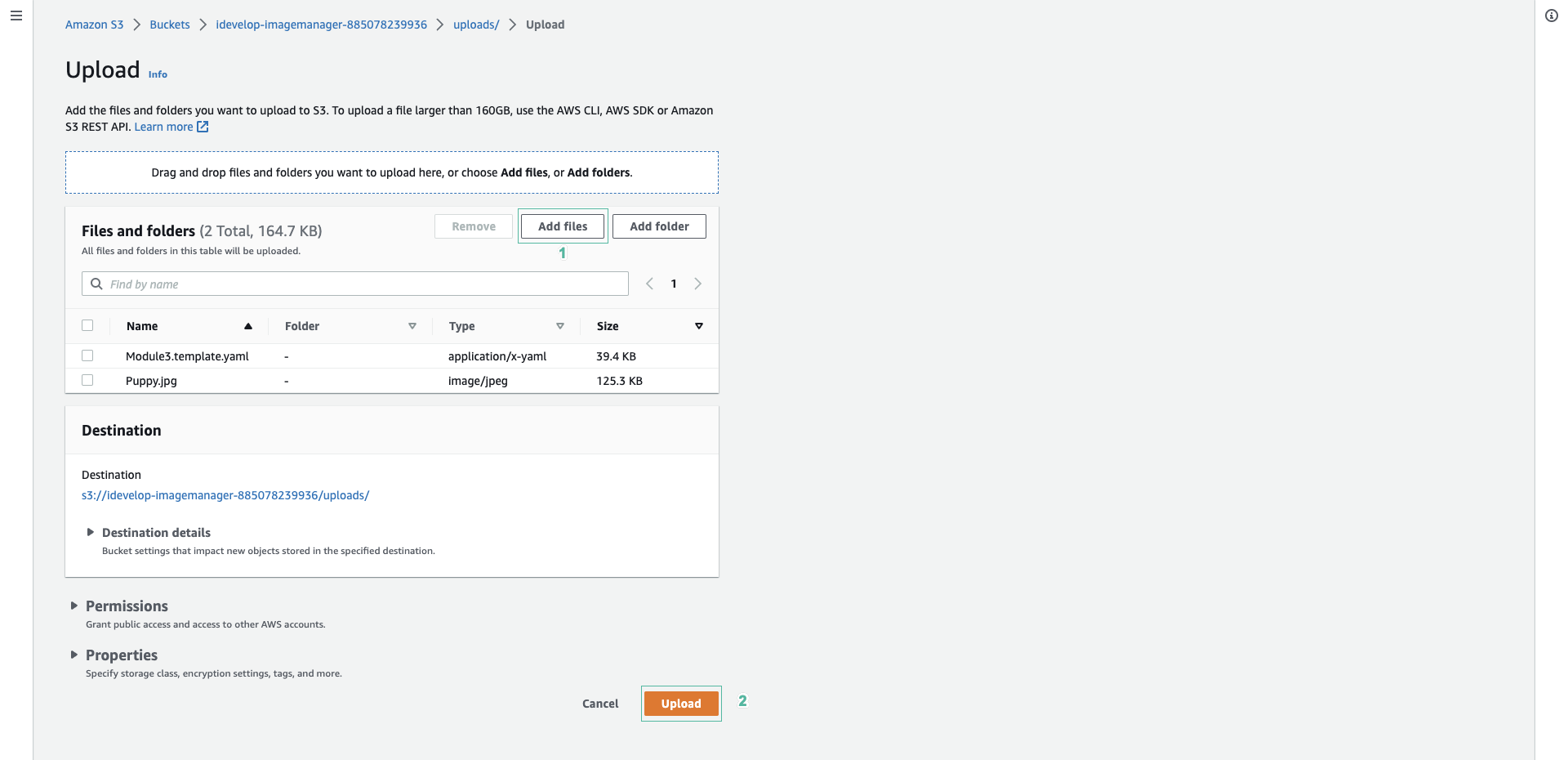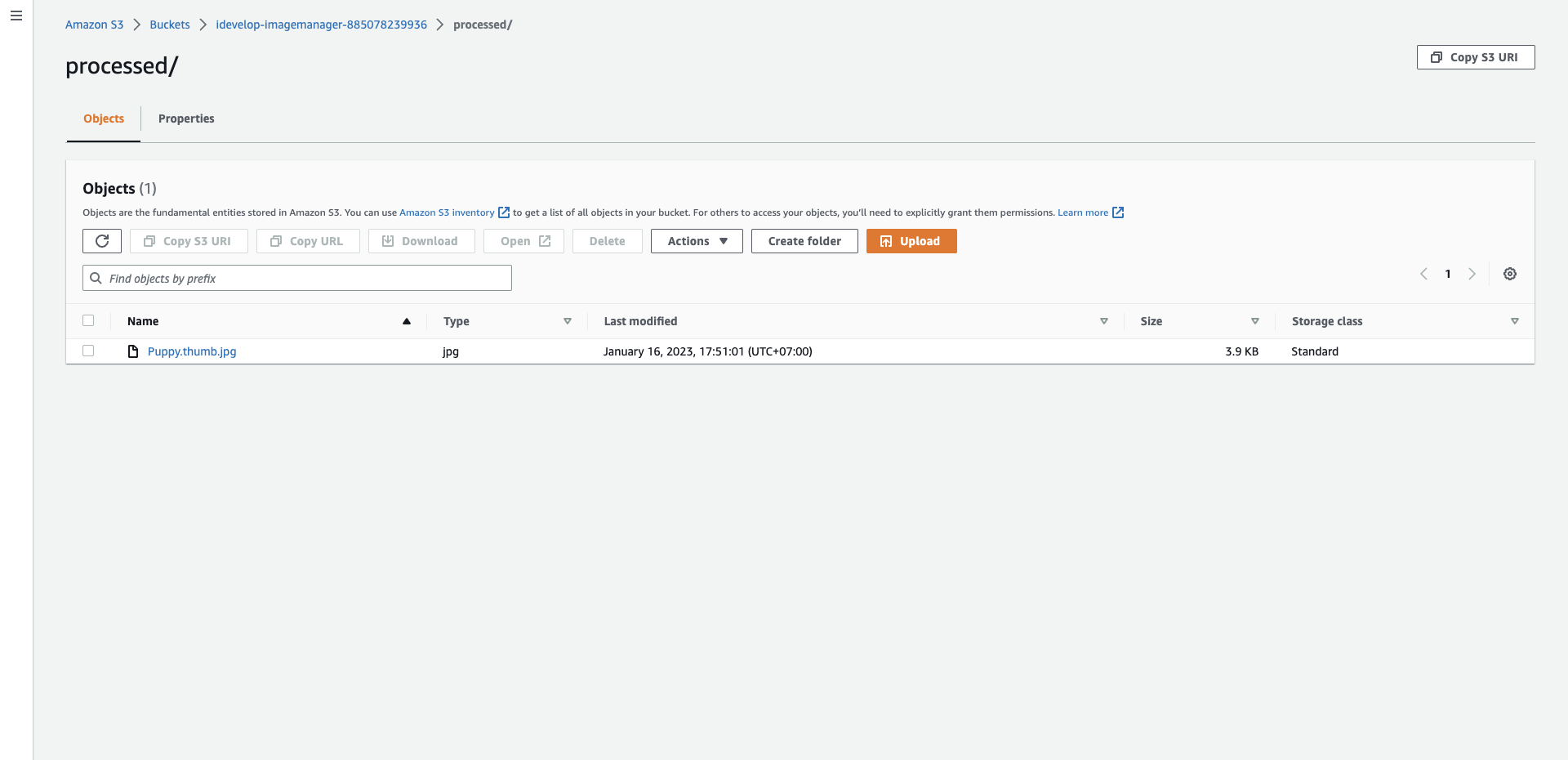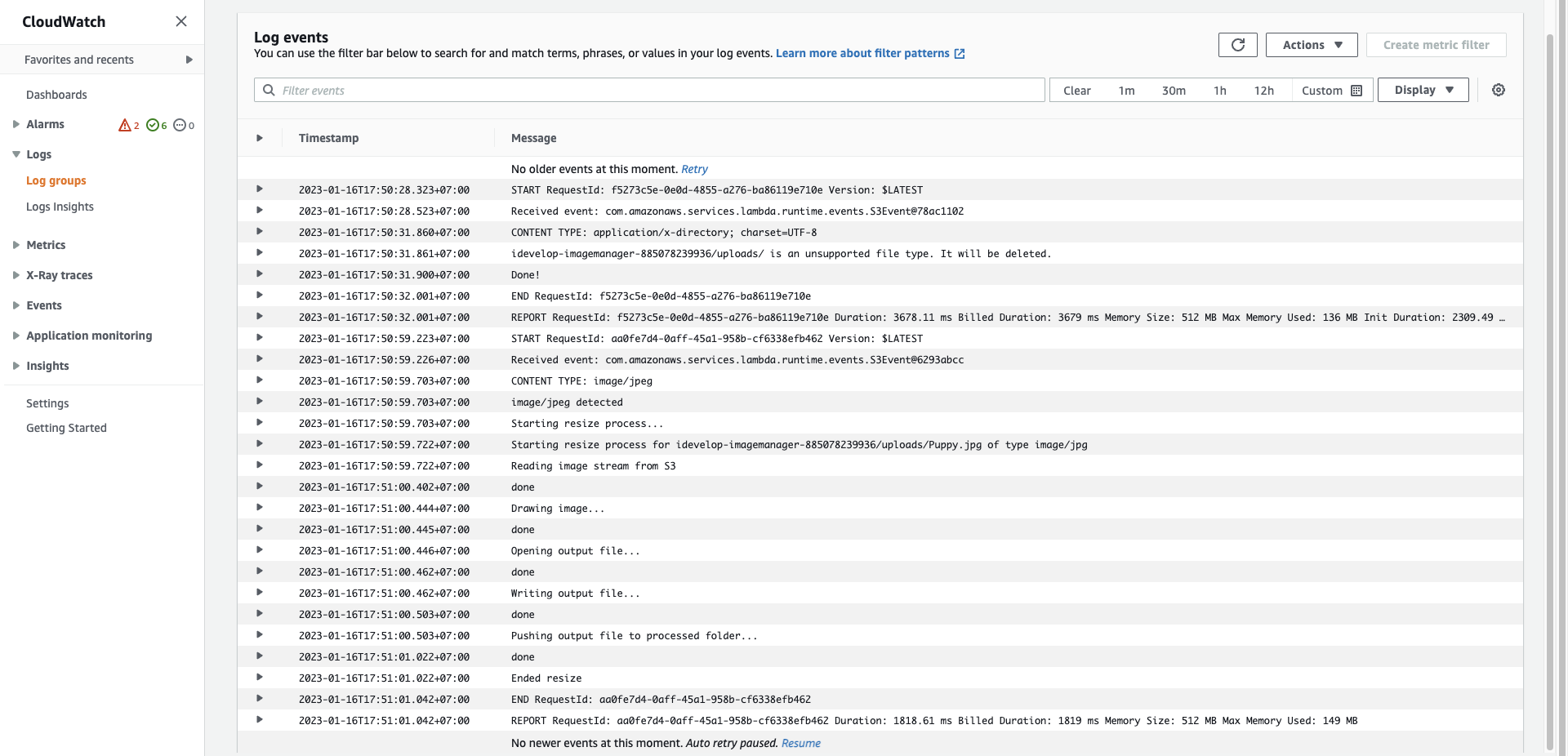Serverless Microservices Automation
In the previous section, you used the IDE Eclipse to create and update a Lambda function using AWS Toolkit for Eclipse. This allow you manually initiate the auto-upload of your Lambda function. However, this mechanism may not be convenient for automating deployment steps for functions or coordinating deployment and updates for other elements of a serverless application, such as event sources and downstream resources. For example, the Eclipse IDE does not give you the ability to deploy and update an S3 bucket and connect an S3 PUT OBJECT trigger, along with your Lambda function as a deployment unit.
You can use AWS CloudFormation to easily specify, deploy, and configure serverless applications. AWS CloudFormation is a service that helps you model and set up Amazon Web Services resources so you can spend less time managing them and more time focusing on running applications in your AWS. You create a template (Template) that describes all the AWS resources you want (like Lambda functions and S3 buckets) and AWS CloudFormation takes care of provisioning and configuring those resources for you.
Alternatively, you can use AWS Serverless Application Model (SAM) to expose resources including serverless applications. These resource types, such as AWS Lambda functions and APIs, are fully supported by AWS CloudFormation and make it easier for you to define and deploy your serverless application.
In this exercise, you will use AWS CLI and AWS CloudFormation/SAM to package the application and deploy it from scratch without having to create or configure any dependencies. manually.
- Right click the TestLambda project in panel Project Explorer. Select Create New File. Name the File Name as template.yaml. This file will be at the same level as the pom.xml file of the TestLambda function in the previous section. Then we edit the content of the file template.yaml as below.
AWSTemplateFormatVersion: '2010-09-09'
Transform: 'AWS::Serverless-2016-10-31'
Description: Testing lambda and S3
Resources:
TestLambda:
Type: 'AWS::Serverless::Function'
Properties:
Handler: idevelop.lambda.s3handler.LambdaFunctionHandler
Runtime: java8
CodeUri: target/s3handler-1.0.0.jar
Description: Testing lambda and S3
MemorySize: 512
Timeout: 15
Role: !Sub arn:aws:iam::${AWS::AccountId}:role/LambdaRole
Events:
CreateThumbnailEvent:
Type: S3
Properties:
Bucket:
Ref: ImageManagerSrcBucket
Events:
- 's3:ObjectCreated:Put'
Filter:
S3Key:
Rules:
- Name: prefix
Value: uploads/
ImageManagerSrcBucket:
Type: AWS::S3::Bucket
Properties:
BucketName: !Sub idevelop-imagemanager-${AWS::AccountId}
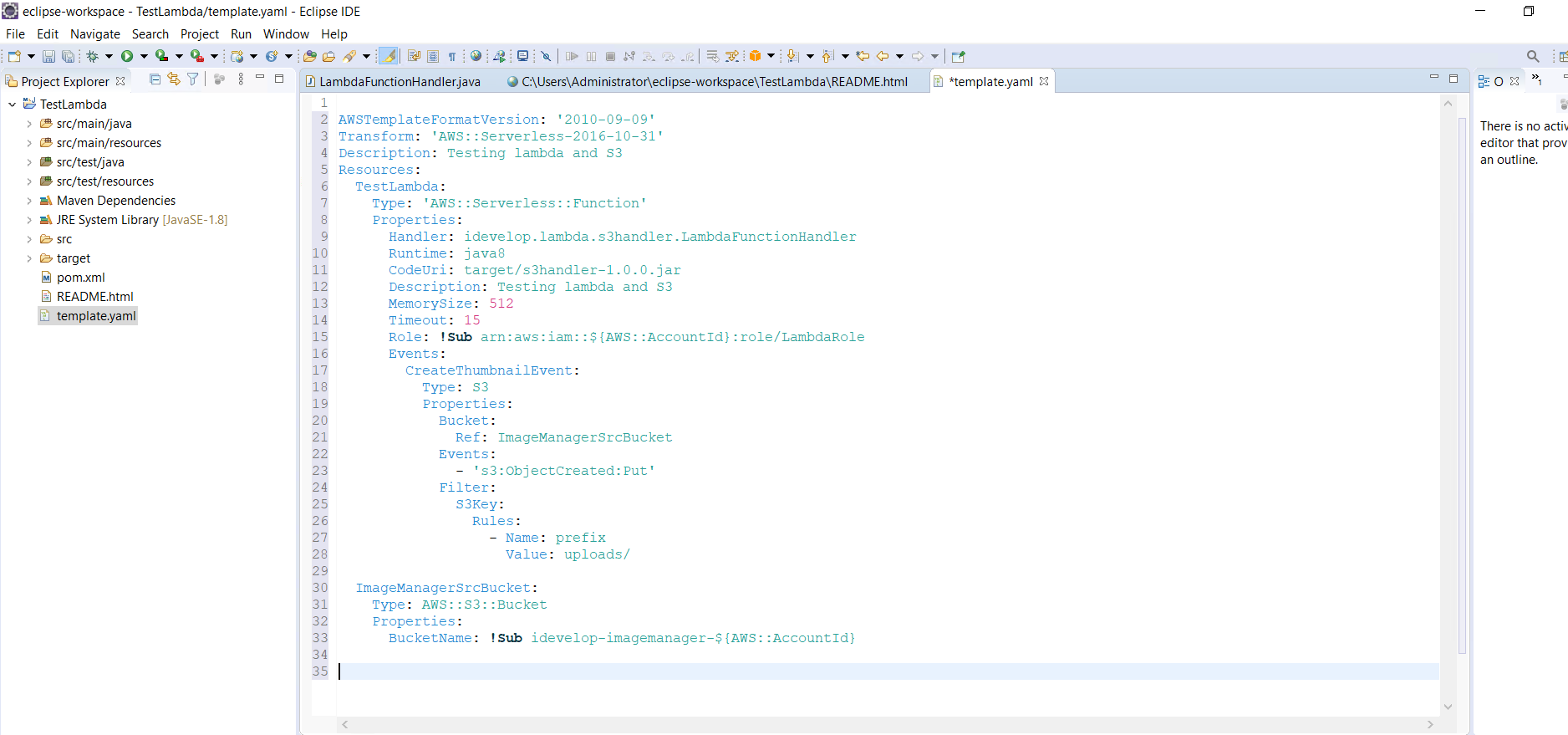
This template describes an S3 bucket that will fire our Lambda function whenever a file is uploaded to the uploads folder - similar to the S3 bucket we created in the previous section.
We will need to install maven , you can download and extract the file containing maven below. Then proceed to configure the environment variable MVN_HOME to unpacked path\bin. Example: C:\apache-maven-3.8.1\bin
File Apache Maven:
